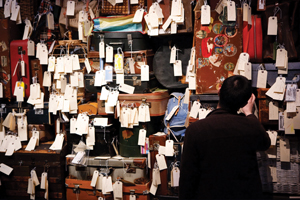Developing cultural partnerships with voluntary and community arts organisations is essential, says Joe Cohen-Evans, if physical regeneration and social cohesion are to be successful

Partnering with the third sector is an activity most local councils engage in but not many talk about. For The Royal Borough of Kensington and Chelsea (RBKC), working with community, voluntary and charity arts organisations is a key part of our regeneration programme. Our borough is not immediately associated with “regeneration”. After all, it is one of the most exclusive places to live in Europe. But this tells only half the story. In many respects, RBKC is a borough of extremes: two of our wards are among the most deprived 10% in the country and swathes are currently scheduled for physical regeneration. The physical regeneration of an area does not take place on its own. Without concomitant cultural change, physical regeneration can be to little or no avail. Regeneration and social cohesion must walk hand in hand.
FRAMING ARTISTIC AMBITION
In 2008, the RBKC explored what the borough might look like in 20 years. This led to a report, ‘Vision 2028’, which put forward recommendations on improving quality of life. Culture is one of them; there is an understanding that culture is part of meaningful regeneration and community cohesion, and that it has the capacity to work across socio-economic divides; define a place’s identity and give a community a sense of pride. Culture, as we aim to provide it through partnership with local arts and the third sector, should empower residents.
We are working on various points that cover regeneration and social cohesion, for example: facilitating the creation of new studio and workshop space; commissioning a report on the feasibility of encouraging and supporting creative and cultural businesses; and outlining a commitment to continue to fund active participation programmes. We know that developing long-term strategic relationships with public organisations, private companies and experts across the arts and cultural spectrum – as well as other council departments – are key to achieving these ambitions.
To this end we are part of a number of networks and hubs, both internally, across RBKC, and externally. These include The Arts Ambassadors Forum, an arts service-led network of council employees which explores cross-departmental partnerships; the Central Arts Partnership, a consortium of local authority arts services; and the Exhibition Road Cultural Group, comprising the many museums and cultural institutions in South Kensington. All such partnerships are essential in helping us to identify new organisations to work with and complement the long-term strategic partnerships we already have with arts organisations and venues across the borough.
COMMUNITY CULTURE
The InTRANSIT festival (which ran between 19 July and 1 August this year) is an example of how we collaborate with local partners to achieve our cultural goals. The festival is programmed in-house by the RBKC arts service and then partners with both established and community-based arts organisations. A framework for the festival is agreed, and local arts organisations then run individual strands of the programme. In effect, the festival provides access to areas of the borough that may otherwise feel out of bounds to some residents (RBKC has the least publicly accessible space of any London borough), encouraging freedom of movement and ownership of space. A number of artists featured in the InTRANSIT programme have also been sourced through the schemes and
projects we deliver. Professional development is important, too. We have introduced a mentoring scheme between an established theatre company and community arts organisation Gilt and Grime, which delivered a successful promenade performance as part of this year’s festival.
A festival such as InTRANSIT contributes to our ambition of making RBKC, once again, a borough that is not only hospitable to artists, but also widely recognised as such. Regeneration is at the heart of all we do, for without a sense of regeneration, we could, at best, only ever mark time. RBKC has a clear vision for the future. Culture rightfully stands proud as one of the pillars on which that ambition is being built.
Joe Cohen-Evans is Arts Information Officer for the Royal Borough of Kensington and Chelsea.
w http://www.rbkc.gov.uk



